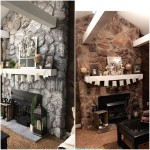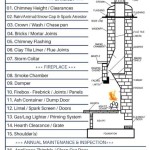Brick Veneer Panels for Fireplace Applications
Fireplaces serve as focal points in many homes, providing warmth and aesthetic appeal. Brick is a classic material choice for fireplace construction and remodeling, valued for its durability, fire resistance, and timeless appearance. However, traditional bricklaying can be time-consuming and costly. Brick veneer panels offer a compelling alternative, providing the look of real brick with simplified installation and potential cost savings.
Brick veneer panels are thin, lightweight brick or brick-like facings that are adhered to a substrate, such as drywall, concrete, or cement board. They are manufactured in various styles, colors, and textures, allowing for customization to match different architectural designs. When properly installed, brick veneer panels provide a convincing simulation of a traditional brick fireplace, enhancing the beauty and value of the home.
Understanding the Benefits of Brick Veneer Panels for Fireplaces
Several key benefits contribute to the growing popularity of brick veneer panels for fireplace applications. These advantages address common challenges associated with traditional brick construction while offering unique aesthetic and practical solutions.
Cost-Effectiveness: One significant advantage of brick veneer panels is their cost-effectiveness compared to installing a full-thickness brick fireplace. The materials themselves are often less expensive than traditional bricks, and the simplified installation process reduces labor costs. Traditional bricklaying requires skilled masons and can take several days or even weeks to complete a fireplace. Brick veneer panels, on the other hand, can often be installed by a homeowner with moderate DIY skills or by a general contractor in a much shorter timeframe. This reduction in labor hours translates directly into cost savings.
Ease of Installation: The lightweight nature and modular design of brick veneer panels make them significantly easier to install than traditional bricks. The panels are designed to interlock or align seamlessly, simplifying the process of achieving a professional-looking finish. Unlike traditional bricklaying, there is no need to mix mortar on-site, transport heavy individual bricks, or carefully align each brick individually. Instead, the panels are typically adhered to the substrate using a thin-set mortar or construction adhesive, and the seams are then grouted to create a realistic brick appearance. This ease of installation can also make brick veneer panels a viable option for remodeling projects where adding the weight of traditional brick might be structurally challenging.
Design Versatility: Brick veneer panels come in a wide variety of styles, colors, and textures, offering homeowners a high degree of design flexibility. Whether the desired look is rustic and traditional or sleek and modern, there is likely a brick veneer panel option to suit the aesthetic. The panels can be manufactured to mimic different types of brick, including antique brick, reclaimed brick, and even custom-colored brick. This versatility makes it possible to create a truly unique and personalized fireplace design. Furthermore, brick veneer panels can be easily cut and shaped to fit around architectural features or to create custom patterns, further expanding the design possibilities.
Reduced Weight: Traditional brick is a heavy material, and adding a full-thickness brick fireplace can place significant structural demands on a building. Brick veneer panels, on the other hand, are significantly lighter than traditional bricks. This reduced weight makes them suitable for installation in a wider range of applications, including on walls that may not be able to support the weight of traditional brick. This is particularly important in remodeling projects where the existing structure may not be able to accommodate the additional load of a full brick fireplace. The lightweight nature of brick veneer panels also makes them easier to handle and transport, further simplifying the installation process.
Improved Thermal Performance: While brick veneer panels themselves do not provide significant insulation, they can contribute to the overall thermal performance of a fireplace when combined with proper insulation materials. By incorporating insulation behind the brick veneer panels, it is possible to improve the energy efficiency of the fireplace and reduce heat loss. This can lead to lower heating bills and a more comfortable living environment. Furthermore, the brick veneer panels themselves can help to regulate temperature fluctuations, providing a more consistent and comfortable ambient temperature in the room.
Key Considerations for Selecting Brick Veneer Panels for a Fireplace
Choosing the right brick veneer panels for a fireplace requires careful consideration of several factors. These include the specific requirements of the fireplace, the desired aesthetic, and the technical specifications of the panels themselves.
Fire Resistance: A primary concern when selecting materials for a fireplace is fire resistance. Brick veneer panels intended for fireplace applications must be manufactured from fire-resistant materials and must be installed in accordance with local building codes and manufacturer's guidelines. It is crucial to verify that the panels have been tested and certified to meet relevant fire safety standards. This certification should be readily available from the manufacturer or supplier. Furthermore, it is important to ensure that the substrate behind the brick veneer panels is also fire-resistant. Cement board is a commonly used substrate for fireplace applications due to its excellent fire resistance properties.
Panel Material and Composition: Brick veneer panels are typically made from either real brick that has been cut into thin slices or from manufactured materials that mimic the appearance of brick. Real brick veneer panels offer the authentic look and feel of traditional brick, while manufactured brick veneer panels can be more lightweight and cost-effective. It is important to carefully consider the material and composition of the panels to ensure that they meet the specific requirements of the project. For example, if the fireplace is located in an area that is exposed to moisture or extreme temperatures, it may be necessary to choose panels that are made from a durable and weather-resistant material.
Panel Thickness and Weight: The thickness and weight of brick veneer panels can vary depending on the material and manufacturing process. Thicker panels generally provide a more realistic brick appearance, but they also tend to be heavier and more difficult to install. Lighter panels are easier to handle and install, but they may not provide the same level of visual depth as thicker panels. It is important to strike a balance between the desired aesthetic and the practical considerations of installation. The weight of the panels also needs to be considered in relation to the load-bearing capacity of the substrate.
Color and Texture: The color and texture of brick veneer panels play a crucial role in the overall aesthetic of the fireplace. Panels are available in a wide range of colors, from traditional red brick to modern gray and white tones. The texture of the panels can also vary, from smooth and uniform to rough and rustic. It is important to choose panels that complement the existing décor and architectural style of the home. Consider factors such as the color of the walls, the flooring, and the furniture when selecting the color and texture of the brick veneer panels. Samples should be viewed in person under different lighting conditions to ensure that the color and texture are satisfactory.
Installation Requirements and Recommendations: Brick veneer panel installation typically requires the use of thin-set mortar or construction adhesive to adhere the panels to the substrate. Detailed instructions are usually provided by the manufacturer and it is crucial to follow these instructions carefully to ensure a successful installation. The substrate must be clean, dry, and properly prepared before installation. The panels should be installed in a staggered pattern to create a more realistic brick appearance. Grout is then applied to fill the joints between the panels, completing the installation process. The type of grout used should be appropriate for the specific type of brick veneer panels and the environment in which the fireplace is located.
Installation Best Practices for Brick Veneer Panels on Fireplaces
Proper installation is essential for ensuring the longevity and aesthetic appeal of brick veneer panels on a fireplace. Following these best practices will help achieve a professional and durable result.
Surface Preparation: Proper surface preparation is critical for ensuring a strong bond between the brick veneer panels and the substrate. The surface must be clean, dry, and free of any loose debris, paint, or other contaminants. If the surface is painted, it may be necessary to sand or prime it to ensure proper adhesion. Cement board is a commonly recommended substrate due to its fire resistance and ability to provide a solid bonding surface. If the substrate is uneven, it may be necessary to apply a leveling compound to create a smooth and uniform surface. Careful attention to surface preparation will prevent issues such as delamination or cracking in the future.
Adhesive Selection and Application: The choice of adhesive is also crucial for a successful installation. Thin-set mortar is a common choice for brick veneer panels, but it is important to select a mortar that is specifically designed for use with brick veneer and that is compatible with the substrate. Construction adhesive can also be used, but it is important to choose an adhesive that is fire-resistant and that is suitable for use in high-temperature environments. When applying the adhesive, follow the manufacturer's instructions carefully. Apply a thin, even layer of adhesive to the back of each panel and press the panel firmly onto the substrate. Use a notched trowel to create ridges in the adhesive, which will help to improve the bond.
Cutting and Shaping Panels: Brick veneer panels can be easily cut and shaped using a wet saw or a masonry saw. When cutting the panels, wear appropriate safety gear, including eye protection and a dust mask. Cut the panels to the desired size and shape, taking care to create clean and precise cuts. If necessary, use a grinder or file to smooth any rough edges. The ability to cut and shape the panels allows for customizing the fireplace design and fitting the panels around architectural features.
Grouting and Finishing: Once the brick veneer panels have been installed, the joints between the panels must be grouted. Select a grout color that complements the color of the brick veneer panels. Apply the grout using a grout float, pressing it firmly into the joints. Remove any excess grout with a damp sponge. Allow the grout to dry completely before sealing it. Sealing the grout will help to protect it from moisture and stains. The final step is to inspect the installation and make any necessary touch-ups. Ensure that all of the panels are securely bonded to the substrate and that the grout is evenly distributed. A well-executed grouting and finishing process will significantly enhance the appearance and durability of the brick veneer fireplace.
By considering these factors and following proper installation techniques, homeowners can successfully incorporate brick veneer panels into fireplace designs, achieving a visually appealing and durable result. The versatility and ease of installation associated with brick veneer panels make them an attractive option for both new construction and remodeling projects.

Building An Electric Fireplace With Brick Facade

Brick Cladding Panels For Fireplaces

7 Popular Stone Veneer Fireplace Design Trends Mason S Mark

Natural Stacked Stone Veneer Fireplace Ideas

White Brick Fireplace Diy Build With Faux Barron Designs

Jerre S Faux Stone Fireplace Surround Genstone

Transform Your Home Stone Veneer Over Brick Fireplace Guide

Stone Fireplace Design And Remodel

Faux Stone Panels For Your Fireplace Makeover

Brick Boards Heat Resistant Insulating Panels Made From Real Slips
Related Posts








